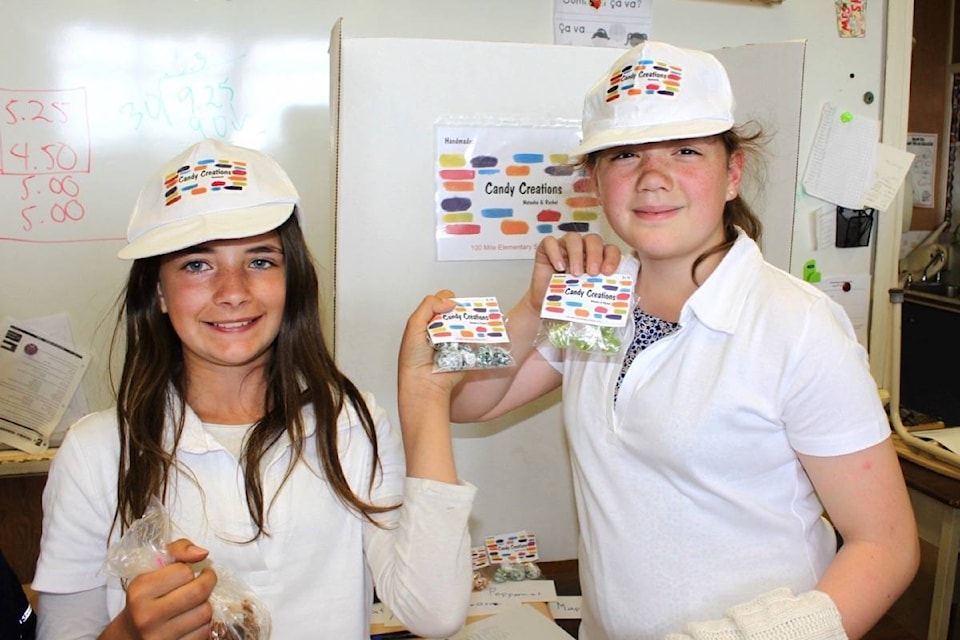At lunch time on June 7, the Grade 5-6 class at 100 Mile Elementary School was bustling with students shopping at a variety of booths featuring homemade trinkets and treats.
The class was operating as a marketplace, with students attempting to sell the products they had created under the applied design and technology section of the new B.C. curriculum.
Expanding from a section where students are required to develop a prototype, teacher Margot Shaw says they brought it to the “next level” of entrepreneurship.
“The kids had to come up with a product and the criteria was they had to come up with something that they could sell to other students for a profit.”
The lunchtime “marketplace” was the first sales test of the products.
“We had lots of prototypes that failed miserably and we had to go back to the drawing board and find something different, so there’s that aspect of designing something that you can actually sell,” says Shaw. “There’s the whole idea behind sourcing materials and coming up with what is a profitable price to sell and what the market will allow.”
Students worked in groups to make and sell anything from chocolate and candies, marigolds in painted pots, to elaborate popsicle stick trucks and canoes.
Additionally, students had learned about and subsequently created various marketing designs to help them sell their product.
The duo of Natasha Atzenberger and Rachel Shaw worked together on selling their handmade “Candy Creations,” taken from a recipe from a Harry Potter cookbook.
Their candies were flying off the shelves, distinguished by their colourful logo and matching on-brand shirts and hats.
“I thought, what can we do that no one else has done,” says Rachel. “We thought shirts.”
The girls say they learned to modify the recipe from the cookbook to prevent it from burning in order to come up with their final product.
“I think the best part is learning what are the different things [we can do], learning from the mistakes we made, and finally just getting it done,” says Atzenberger.
Students get to keep the profits from their enterprise, after paying the school or their parents back for the materials used.
Shaw, as their teacher, hopes that alongside gaining a profit, students learn about how to make business decisions.
“A little bit about what it’s like to run a business, profit, loss, material costs, as well as co-operative skills,” she says.
